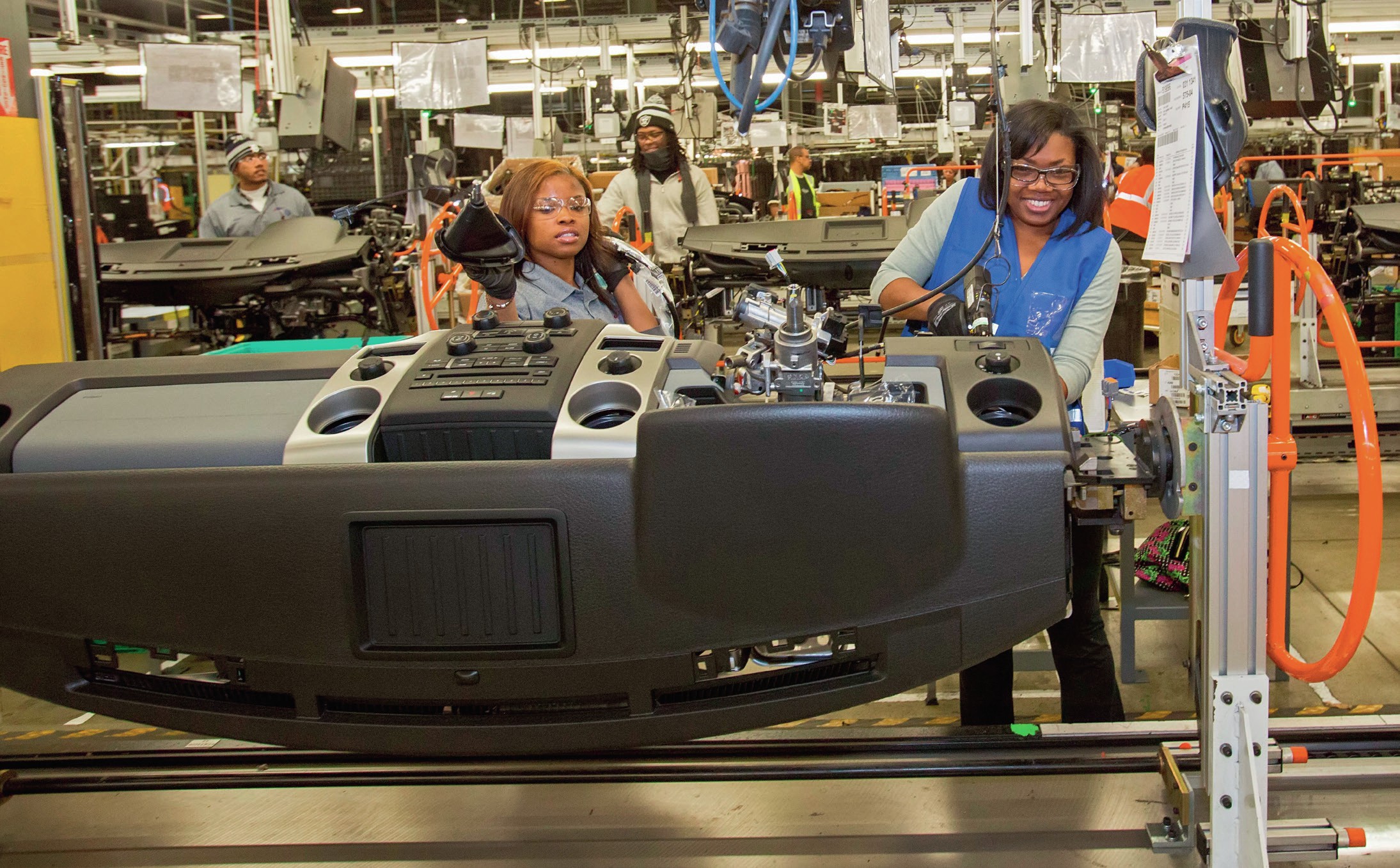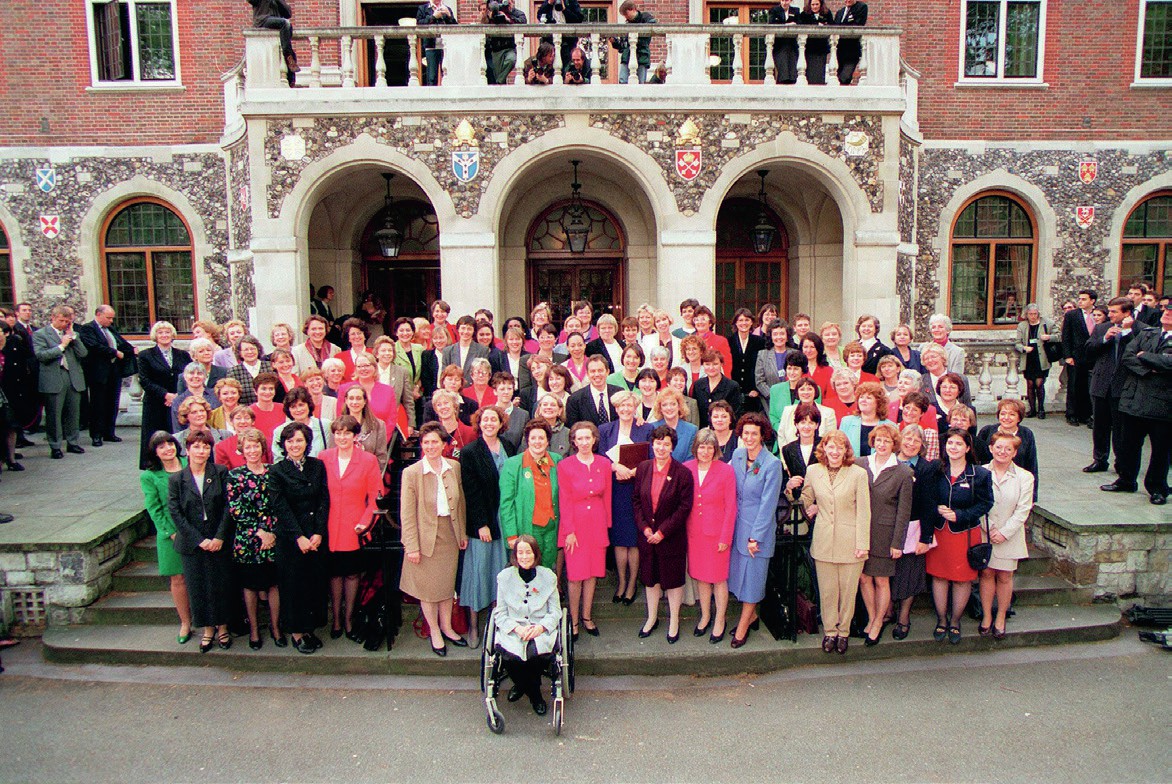Feminism and equality
How far have feminists sought equal rights between men and women?

EXAM LINKS
AQA and Edexcel specifications focus on debates about the nature of feminism, core feminist values and feminist ideas and thinkers.
Historically, different branches of feminism have approached equal rights in differing ways. Liberal feminist campaigns starting in the eighteenth century helped women in the Western world win equal legal and political rights. The following generation of feminists benefited from these rights but also felt their limitations. Women still lacked the power and influence of men, and views varied about how to rectify this. Radical feminists in the mid-twentieth century thought that achieving complete equality in the private as well as the public sphere would be transformative.
Other feminists suggested that equal rights were not enough. They wanted policies that prioritised women by providing them with rights not available to men. Some ecofeminists even suggested that women should top a new hierarchy. bell hooks believed that understanding inequality involved more than just exploring gender discrimination – racial discrimination must also be taken into account.
The development of liberal feminist ideas
Liberal feminist Mary Wollstonecraft (1759–97) wrote that women, like men, are ‘rational creatures’ and entitled to full legal and political rights. She also gave powerful voice to the idea that girls should receive the same education as boys. Although it might seem to follow logically from this that women should be granted the same employment rights and job opportunities as men, this was not something Wollstonecraft demanded. By contrast, a century later the feminist pioneer Charlotte Perkins Gilman (1860– 1935) argued that only economic independence would guarantee women equal rights more generally.
Later liberal feminists were unconvinced by Gilman’s assertion that equal legal and political rights were an insufficient guarantee of women’s freedom. They wanted women to be able to claim equal rights in the public sphere but were also keen to allow them choice about how to organise their private lives. From the liberal perspective, the decision to be a full-time mother or homemaker was a valid and personal one, not something that undermined other feminist aims, even if a woman chose to accept an unequal division of labour at home.
The emergence of radical feminism
By the time the radical feminist movement emerged in the 1960s, British and American women had legal and political equality with men – in theory at least. In practice, discrimination continued. Women were still under-represented in political and economic life. It was plain to see that winning equal rights in the public sphere was necessary but not sufficient to achieve women’s emancipation. Radical feminists provided the women’s rights movement with a new focus – effecting a sexual revolution in the private sphere to overturn existing male/female relationships.
Only by rejecting a life in which they took primary responsibility for homemaking and raising children would women gain the time they needed to fulfil their potential in the public sphere. As importantly, the sexual revolution would empower women, giving them the confidence they needed to compete on equal terms with men in political and economic life. Thus, compared to their liberal forebears, radical feminists extended the scope of the rights women should be able to claim. Women needed not just equal rights in the public sphere but also equality at home.
Socialist feminism
The trouble with equal rights, as socialist feminist Sheila Rowbotham (b 1943) recognised, is that they only lead to equal outcomes if the parties awarded those rights have the same needs. Where women had different needs from men, Rowbotham wrote, what they required were ‘unequal rights’.
It was the policies of the Ford Motor Company that prompted Rowbotham to address this issue. Ford argued that because it allowed women time off work when they had children (a right it did not grant to its male workers), it was justified in discriminating against them in other ways. What Rowbotham wanted was for Ford’s female workers to be entitled to maternity leave and to be free from all other forms of discrimination. Today, an employer acting in accordance with the principle of unequal rights might allow its female employees ‘menstrual leave’ when they are experiencing extreme period pain but provide no equivalent concessions to its male workers.
Positive discrimination
Motivated by a similar sentiment to the idea of unequal rights was the concept of positive discrimination. This accorded favourable treatment to groups that faced prejudice in the past. It was supported by some feminists because it allowed for the more rapid advancement of gender equality in the workplace, but was controversial with others because it was inconsistent with the principle of equality of opportunity. When positive discrimination was used to boost the careers of women, it granted them rights and chances that men were denied (Box 1). Today, positive discrimination is illegal in the UK, but companies can still use what is known as ‘positive action’ to assist women in the workplace (Box 2).
Box 1 Positive discrimination
In the run-up to the 1997 general election, the Labour Party used all-women shortlists for some parliamentary seats. The party’s aspiration was to see female candidates in half of all winnable seats. The initiative allowed women to apply for any vacant parliamentary seat but restricted applications from men to those constituencies without all-women shortlists. A 1996 industrial tribunal found that the policy was contrary to the Sex Discrimination Act of 1975 but ruled that the 34 women already chosen through it should not face a reselection process.

Box 2 Positive action
Forms of positive action aimed at encouraging women to apply for jobs and promotions include:
■ advertising job vacancies in women’s magazines
■ providing female employees with additional mentoring
■ promoting family-friendly policies
■ favouring a female candidate over a male one if they are equally well qualified in every other way
Ecofeminism
More controversial than positive discrimination is the call made by some ecofeminists for matriarchal societies. This subscribes to essentialist theory, which says that men and women have different personal characteristics, and that women’s distinctive qualities should be celebrated. Such feminists see women as naturally more caring and nurturing than men, and as better at fostering consensus. They view men as tending towards more combative and confrontational behaviours.
Essentialism contradicts the beliefs of liberal and radical feminists, who believe in the feminist critique of androgyny. This is the idea that, their reproductive organs aside, men and women are the same. This is used to argue for equal rights. If a woman can do and be anything a man can, there is no reason to deny her equal treatment. Essentialism supports the opposite argument – that men and women can and should be treated differently.

While most ecofeminists think in terms of men and women being ‘different but equal’, a small number suggest that women are the superior sex. Ecofeminist Vandana Shiva (b 1952) has advocated for ‘a future where women lead the way to make peace with the Earth’. Shiva is convinced that women have a closer connection to nature than men and will, therefore, be better guardians of the environment. She has inspired other ecofeminists to believe in matriarchal societies.
Intersectionality
In her 1981 book Ain’t I AWoman? bell hooks (1952– 2021) added another dimension to the debate on equal rights, pointing out that black women did not command pay parity with white women or with black men, both of whom earned less on average than white men. This remains true today, in both the UK and USA. Its consequence is that, whereas white women can focus on achieving equality with white men, black women also need to right the discrimination which sees them treated with less respect than other people of their own gender.
Conclusion
The vast majority of feminists wish to see men and women on an equal footing. Even those who supported positive discrimination did so not to elevate women above men but to achieve equality more quickly. They now hope that positive action will have a similar effect. Support for unequal rights sprang from a related idea – that protecting women from discrimination sometimes necessitated granting them additional entitlements. Feminists have differing approaches to equality but most of them prize it as the final goal.
ACTIVITY
Use this article and other resources available to you to argue either for or against the following debate motion:
‘Feminists have no right to demand different treatment for women.’
EXAM-STYLE QUESTIONS
1 ‘Feminism is essentially in agreement upon equality.’ Analyse and evaluate this statement with reference to the feminist thinkers that you have studied. (25 marks, AQA-style)
2 To what extent do different branches of feminists disagree about equality? Use appropriate thinkers that you have studied to support your answer, and consider any differing views in a balanced way. (24 marks, Edexcel-style)





